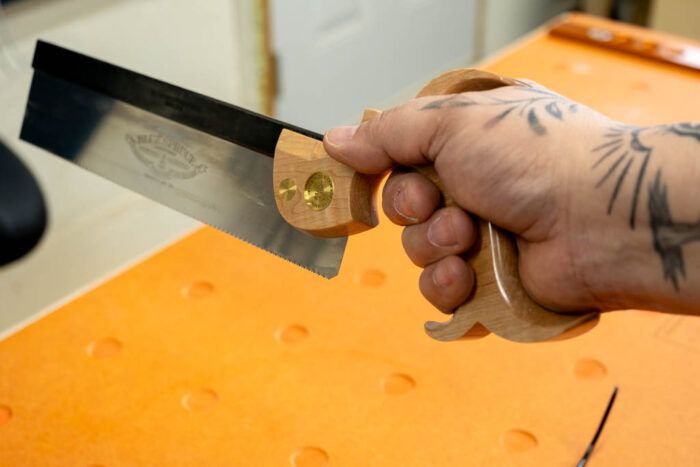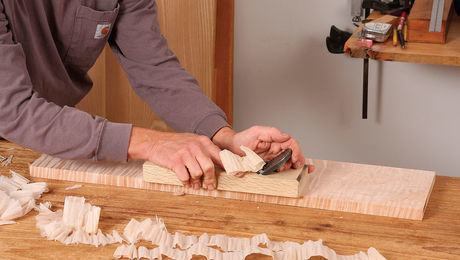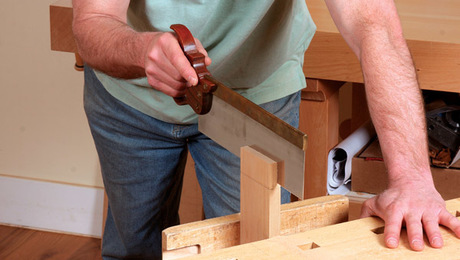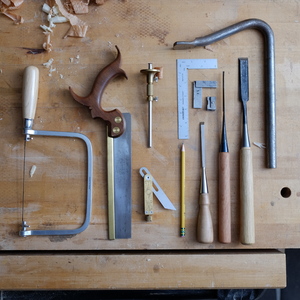Lose the kung-fu grip
Vic Tesolin shares the importance of holding your tools correctly.
Woodworking is a craft that requires patience, care, and a good eye for detail. From making detailed designs to building strong furniture, every part of woodworking is about skill and technique. But there’s a common problem that many woodworkers face—holding their tools too tightly, which I refer to as the “kung-fu” grip.
At the bench, how you hold your tools isn’t just about your hands; it’s about how you connect with the wood. Holding your tools too tightly can ruin this connection and cause problems with your work. You get a lot of feedback from your tools, and when you grip them too hard, you mask that feedback.
One big problem with holding your tools too tightly is that it can affect how smoothly they move. When you grip your saw handle too hard, it won’t move smoothly, which can cause a cut to go wrong. You will end up twisting the saw in the cut, which will result in a sloppy cut that isn’t straight, a disaster when cutting something like dovetails.
Another issue with gripping too hard is that it can make your hands shake. When your muscles get tense from gripping tightly, your hands start shaking. This makes it hard to do fine work because the tool is moving unnecessarily. An excellent example of this is using a hand plane to remove the machining marks on the edge of a jointed board. With an iron grip, the plane will not travel smoothly down the edge, and you can even force the plane to cut a bevel you didn’t want.
Holding your tools tightly also can cause you to tire quickly. When your muscles are working hard to grip, they get tired fast, meaning you can’t work for as long or as well. We’ve all felt the results of this with sore forearms or an aching hand. By holding your tools more gently, you can save your energy and work for longer.
How can you learn to hold your tools gently? It takes practice and attention. Start by relaxing your hands and arms before you start working. Hold your tools firmly but not tightly. Instead of forcing the tool, let it guide your movements. Listen to what your hands and the wood are telling you, and adjust your grip as needed.
I often coach my students to hold the handsaw as though they were holding a small bird—lightly so as not to crush it but firmly enough so that it can’t escape. In the case of hand planes, a light grip on the tote will still allow you to apply the requisite downward and forward pressure that will result in great surfaces.
The next time you’re in the shop, try holding your hand tools more gently. You can do better work for longer and enjoy hand-tool woodworking even more.
To understand, you must do.
Fine Woodworking Recommended Products

Stanley Powerlock 16-ft. tape measure

Veritas Micro-Adjust Wheel Marking Gauge

Veritas Precision Square

























Log in or create an account to post a comment.
Sign up Log in